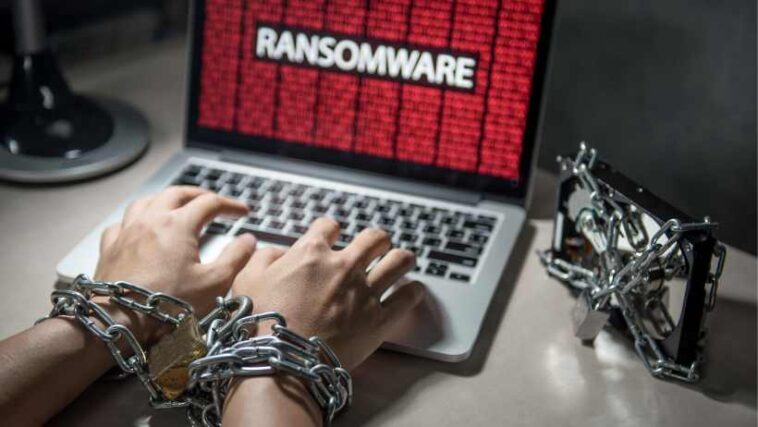Anticipate to acquire knowledge regarding the most recent ransomware menace that demands your attention: Snatch ransomware. The elements of this perilous cybercriminal operation that has captivated the Cybersecurity and Infrastructure Security Agency (CISA) and the Federal Bureau of Investigation (FBI) are divulged in this article.
In contrast to other widely recognized ransomware organizations, Snatch maintains a more covert operation despite its substantial risk to numerous industries, including defense, food and agriculture, and information technology.
Snatch’s use of “double extortion,” in which they not only encrypt your data but also threaten to disclose or sell it if you do not pay the ransom, renders them especially dangerous. Gain knowledge regarding their strategies, intended recipients, and preventative measures against this cunning ransomware.
A Synopsis of the Snatch Ransomware
The FBI and CISA have recently issued an advisory regarding the Snatch ransomware, which notifies organizations of the dangers presented by this ransomware-as-a-service operation. Although Snatch may not be as widely recognized as other ransomware groups, these agencies’ advisories indicate that it is not to be underestimated. The logo of the group, which seems to allude to the film “Snatch,” contributes an original and imaginative element to their brand identity.
Multiple sectors associated with critical infrastructure, including defense, food, agriculture, and information technology, have been targeted by Snatch. The group specializes in double extortion, a method in which they exfiltrate as well as encrypt the data of their victims. This means that if the victim refuses to pay the extortion, their data may remain vulnerable to exposure or sale to other cybercriminals, despite the presence of duplicates.
The disclosure of data from the Florida Department of Veterans Affairs and the release of 1.6 terabytes of sensitive documents from the Department of Defense of South Africa are notable incidents involving Snatch. These occurrences demonstrate the organization’s readiness to employ pilfered information to coerce and extort their targets.
The operations of Snatch began in 2018, although they were formerly known as Team Truniger. In order to circumvent existing antiviral protection, they employ strategies such as rebooting Windows computers into secure mode and utilizing command-and-control servers hosted in Russia.
The FBI and CISA’s warning implies that Snatch is intensifying its operations and presenting an even more formidable menace. It is unknown whether the fact that their assaults appear to target North American organizations signifies the assailants’ location or the nature of the targets they are attempting to penetrate.
Safeguarding against the Snatch Ransomware
To safeguard your organization against Snatch ransomware and other comparable threats, it is imperative that you implement a number of security measures and best practices. These consist of:
Secure Computing Methods
It is critical to adhere to secure computing practices in order to avert ransomware attacks. This includes exercising caution when receiving suspicious emails, refraining from downloading attachments or clicking on links from unknown sources, and updating and patching software on a regular basis.
Secure backups offsite
It is critical to ensure the security and currency of external archives in anticipation of a ransomware attack. By doing so, you can guarantee that you can recover your encrypted data from a backup without being required to pay the ransom.
Current Security Solutions
It is critical to maintain current security solutions for your organization in order to safeguard against ransomware attacks. Utilizing reputable antivirus software, firewalls, and other security tools capable of detecting and blocking malicious activity are all components of this.
Management of Vulnerabilities Patches
Consistently applying patches and updates to software is crucial in safeguarding against potential vulnerabilities that could be exploited by ransomware such as Snatch. Installing upgrades and updates in a timely manner aids in closing security holes and reduces the likelihood of a successful attack.
The segmentation of networks
The utilization of network segmentation aids in the limitation of adversaries’ lateral movement within the network of an organization. By implementing a zone-based system, one can restrict the propagation of ransomware and other malicious software, thereby mitigating the potential consequences of an intrusion.
Implement Strong, Distinct Passwords
Implementing robust and distinct passwords for all accounts and sensitive information serves to fortify the safeguards against unauthorized entry. Passwords ought to be intricate, preventing information that is simple to deduce or common patterns. Password managers facilitate the creation and storage of robust passwords for numerous accounts.
Activate the use of multi-factor authentication
The implementation of multi-factor authentication (MFA) enhances security measures by necessitating users to furnish multiple verification credentials prior to gaining entry to systems or data. This measure aids in thwarting unauthorized access, notwithstanding compromised credentials.
The Encryption of Data
Ransomware attacks may be met with an increased measure of protection if sensitive data is encrypted. Even if data is compromised, it will be difficult for adversaries to access or utilize the encrypted information.
Deactivating Superfluous Functionality
By disabling superfluous features that are not required by your organization, you diminish the attack surface and thereby reduce the number of potential entry points for cybercriminals. This entails deactivating services, interfaces, or features that are not in use and do not contribute to the functioning of your organization.
Awareness and Education of Employees
It is critical to educate and raise employee awareness regarding the dangers posed by ransomware and other cyber threats. Preventing successful attacks requires employees to be trained in secure computing practices, identify fraudulent emails, and report any suspicious activity.
Through the adoption of these preventive measures and the maintenance of secure computing practices, organizations can substantially mitigate the likelihood of succumbing to Snatch ransomware or analogous assaults. Maintaining vigilance and proactivity is critical in the dynamic realm of cybersecurity. Ensure the security of your organization and data by safeguarding them against ransomware.



